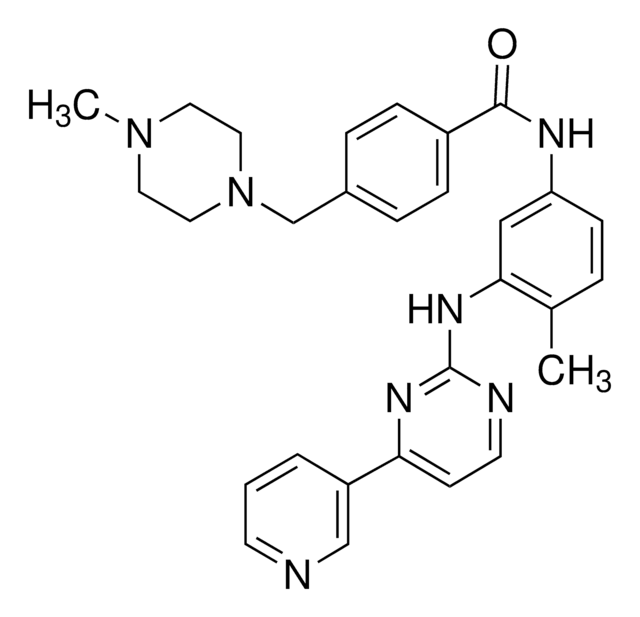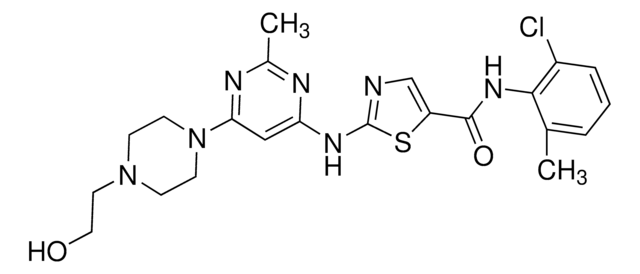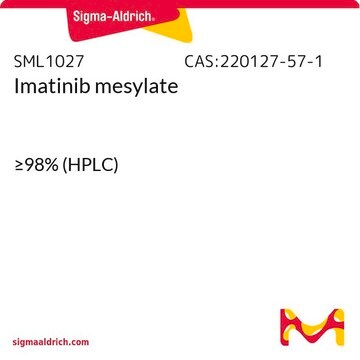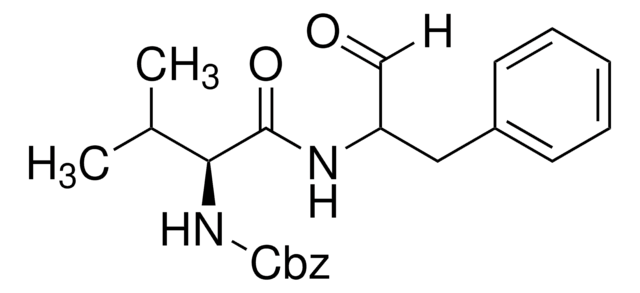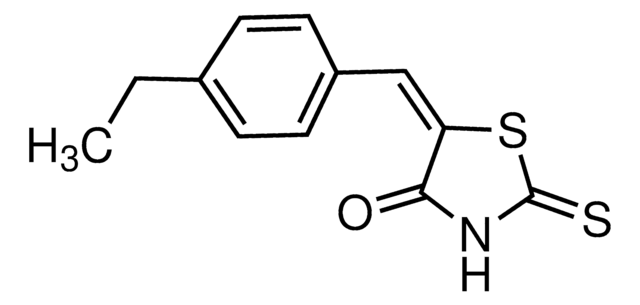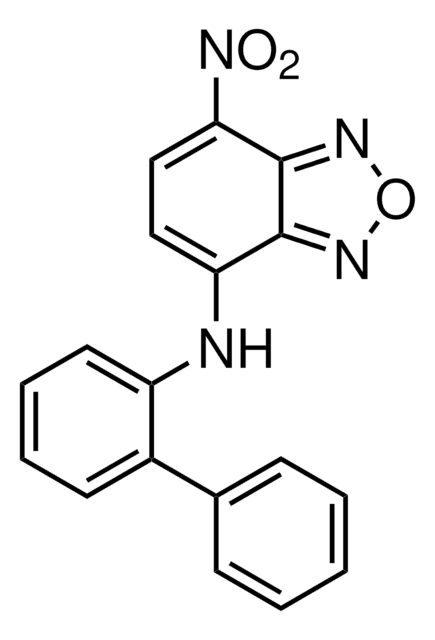G7923
GO-201 trifluoroacetate salt
≥95% (HPLC)
Sinónimos:
D-Arg-D-Arg- D-Arg- D-Arg- D-Arg- D-Arg- D-Arg- D-Arg- D-Arg-Cys-Gln-Cys-Arg-Arg-Lys-Asn-Tyr-Gly-Gln-Leu-Asp-Ile-Phe-Pro trifluoroacetate
About This Item
Productos recomendados
Quality Level
assay
≥95% (HPLC)
form
lyophilized
color
white
solubility
H2O: >1 mg/mL
storage temp.
−20°C
SMILES string
OC(=O)C(F)(F)F.CC[C@H](C)[C@H](NC(=O)[C@H](CC(O)=O)NC(=O)[C@H](CC(C)C)NC(=O)[C@H](CCC(N)=O)NC(=O)CNC(=O)[C@H](Cc1ccc(O)cc1)NC(=O)[C@H](CC(N)=O)NC(=O)[C@H](CCCCN)NC(=O)[C@H](CCCNC(N)=N)NC(=O)[C@H](CCCNC(N)=N)NC(=O)[C@H](CS)NC(=O)[C@H](CCC(N)=O)NC(=O)[C@H](CS)NC(=O)[C@@H](CCCNC(N)=N)NC(=O)[C@@H](CCCNC(N)=N)NC(=O)[C@@H](CCCNC(N)=N)NC(=O)[C@@H](CCCNC(N)=N)NC(=O)[C@@H](CCCNC(N)=N)NC(=O)[C@@H](CCCNC(N)=N)NC(=O)[C@@H](CCCNC(N)=N)NC(=O)[C@@H](CCCNC(N)=N)NC(=O)[C@H](N)CCCNC(N)=N)C(=O)N[C@@H](Cc2ccccc2)C(=O)N3CCC[C@H]3C(O)=O
InChI
1S/C133H233N61O31S2.C2HF3O2/c1-5-68(4)99(120(222)190-90(61-69-23-7-6-8-24-69)121(223)194-58-22-37-93(194)122(224)225)193-117(219)89(63-98(200)201)189-115(217)86(59-67(2)3)186-113(215)84(42-44-94(136)196)173-97(199)64-172-101(203)87(60-70-38-40-71(195)41-39-70)187-116(218)88(62-96(138)198)188-111(213)73(26-9-10-46-134)175-103(205)75(28-13-49-163-125(143)144)182-110(212)82(35-20-56-170-132(157)158)184-118(220)91(65-226)192-114(216)85(43-45-95(137)197)185-119(221)92(66-227)191-112(214)83(36-21-57-171-133(159)160)183-109(211)81(34-19-55-169-131(155)156)181-108(210)80(33-18-54-168-130(153)154)180-107(209)79(32-17-53-167-129(151)152)179-106(208)78(31-16-52-166-128(149)150)178-105(207)77(30-15-51-165-127(147)148)177-104(206)76(29-14-50-164-126(145)146)176-102(204)74(27-12-48-162-124(141)142)174-100(202)72(135)25-11-47-161-123(139)140;3-2(4,5)1(6)7/h6-8,23-24,38-41,67-68,72-93,99,195,226-227H,5,9-22,25-37,42-66,134-135H2,1-4H3,(H2,136,196)(H2,137,197)(H2,138,198)(H,172,203)(H,173,199)(H,174,202)(H,175,205)(H,176,204)(H,177,206)(H,178,207)(H,179,208)(H,180,209)(H,181,210)(H,182,212)(H,183,211)(H,184,220)(H,185,221)(H,186,215)(H,187,218)(H,188,213)(H,189,217)(H,190,222)(H,191,214)(H,192,216)(H,193,219)(H,200,201)(H,224,225)(H4,139,140,161)(H4,141,142,162)(H4,143,144,163)(H4,145,146,164)(H4,147,148,165)(H4,149,150,166)(H4,151,152,167)(H4,153,154,168)(H4,155,156,169)(H4,157,158,170)(H4,159,160,171);(H,6,7)/t68-,72+,73-,74+,75-,76+,77+,78+,79+,80+,81+,82-,83+,84-,85-,86-,87-,88-,89-,90-,91-,92-,93-,99-;/m0./s1
InChI key
MDUBLMWNQKKWEW-VECPGXDMSA-N
General description
Application
Biochem/physiol Actions
Storage Class
11 - Combustible Solids
wgk_germany
WGK 3
flash_point_f
Not applicable
flash_point_c
Not applicable
Elija entre una de las versiones más recientes:
¿Ya tiene este producto?
Encuentre la documentación para los productos que ha comprado recientemente en la Biblioteca de documentos.
Nuestro equipo de científicos tiene experiencia en todas las áreas de investigación: Ciencias de la vida, Ciencia de los materiales, Síntesis química, Cromatografía, Analítica y muchas otras.
Póngase en contacto con el Servicio técnico
